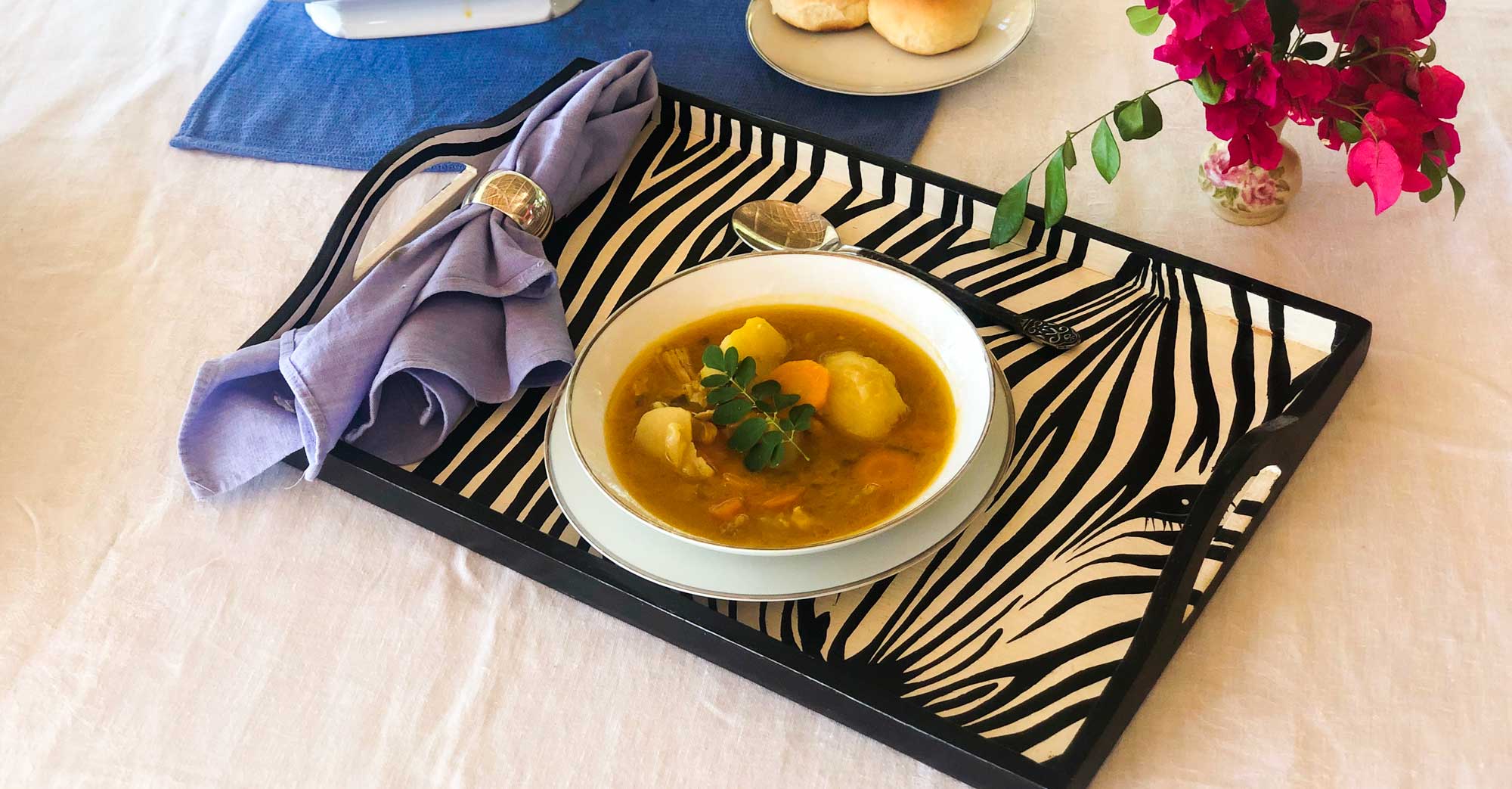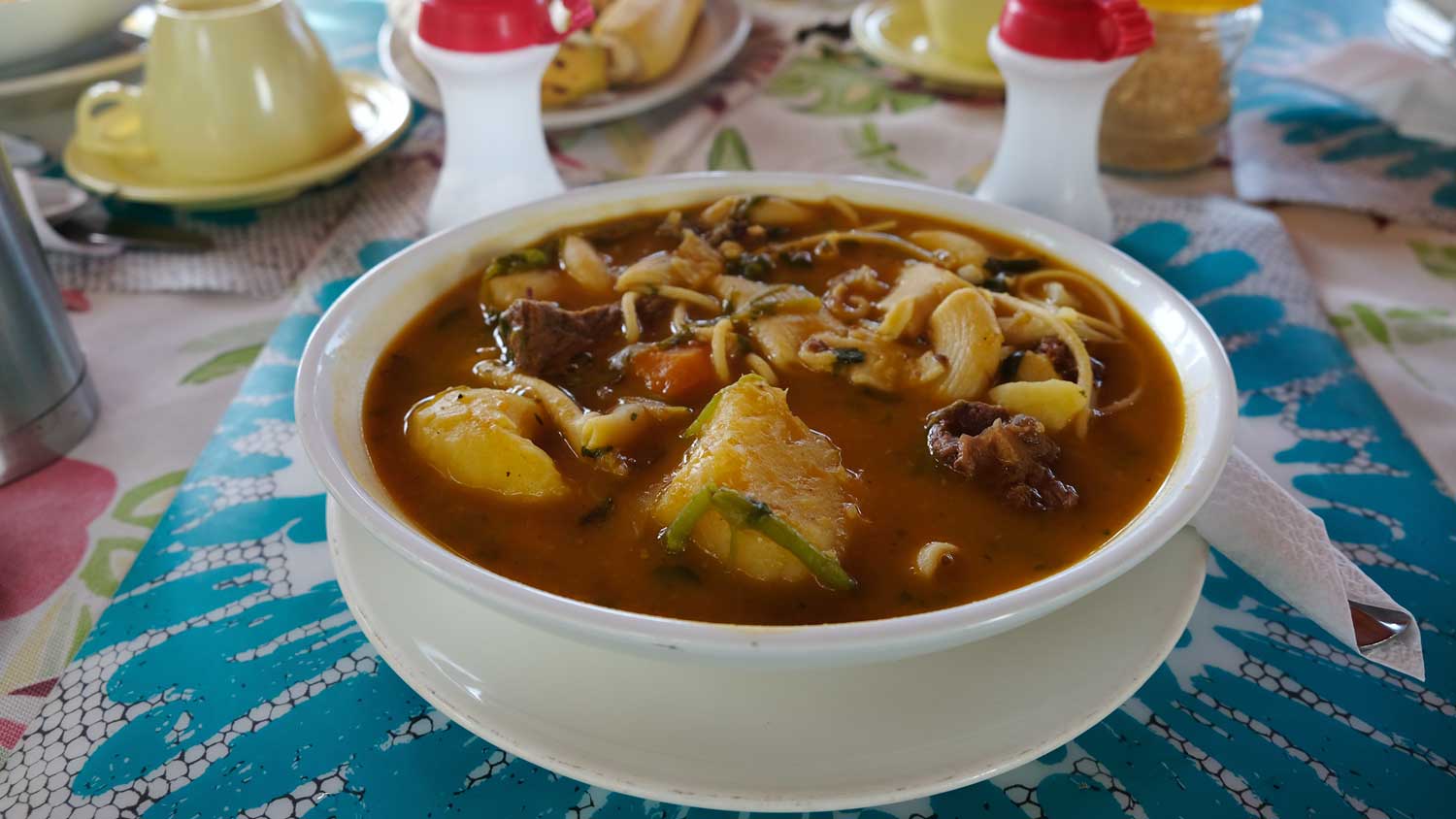
Photo: Anton Lau
Soup Joumou – the taste of freedom
This once-forbidden stew now symbolises independence.
What is soup joumou?
Soup Joumou is a delicious and aromatic dish with a dense history, dating back to when it was a favourite of French slave-owners in eighteenth-century Haiti.
Joumou is the Kreyòl word derived from giraumon in French, which means “pumpkin,” in English. If you’re an avid fall cook, you might see joumou varietal pumpkins at some specialty supermarkets in the United States. They’re easy to spot at Haiti’s sprawling farmers’ markets.
To make soup joumou, two to three joumou are diced into sizeable chunks, and cooked in hot water until they are tender. While this happens, some meat is usually prepared to go with it: beef or pork, depending on what is available in the area. Once the joumou is tender, it is chucked into a blender with some of its cooking water and blended to a soft, silky consistency.
It all goes back into the pot over a low heat setting, and is joined by carrot chunks, potato cubes, cabbage quarters, pasta, and the prepared meat.
This simmers for a while, until the pasta is tender. Some people add dumplings at this point as well. After adding zesty, spicy seasoning, it’s ladled into a large serving bowl, which will sit at the center of a dining table with fresh bread from the local bakery, awaiting Sunday fast-breakers.
You’ll also find it as a centrepiece of New Year’s Day celebrations.
Why is soup joumou so special?
In 19th century Haiti, living conditions for slaves were unspeakably awful. As elsewhere in the world, they were treated brutally, kept enslaved by a combination of gruesome physical treatment and psychological abuse. Slavemasters denied these people as much as possible, even seemingly trivial things, especially if those things were associated with the lifestyle of Haiti’s white, slave-owning bourgeoise.
One tradition that was well established within the bourgeoisie was that of having soup joumou. Some households could afford to make it several times a week, others only on Sundays, but a bowl of soup joumou was never to be seen in the hands of a slave. This food was not intended for them, as it was too rich, too wholesome, too good.
In the first years of the 19th century, slaves and free black Haitians led a successful revolution, taking control of the country and instating their own language, their own institutions, and their own customs. As a potent symbol of the abundance that had been denied them for hundreds of years, the newly free population appropriated the food most symbolic of freedom: soup joumou.

Photo: Franck Fontain
Independence was officially declared on January 1st, 1804. To celebrate that first New Year’s Day, the people of Haiti prepared, cooked, and shared soup joumou. A delicacy previously forbidden, it was now made available to everyone. More than two hundred years later, the tradition is still going strong.
If you’re in Haiti on a Sunday, and especially if you’re here on New Year’s Day, make sure you try a bowl of soup joumou. You might find it at a hotel or served hot by a street vendor, but the best soup joumou is home-made – so make some friends.
Written by Kelly Paulemon.
Published December 2018
Our recommendations

Paradise for your inbox
Your monthly ticket to Haiti awaits! Get first-hand travel tips, the latest news, and inspiring stories delivered straight to your inbox—no spam, just paradise.




